Planetary scientist helps equip rover Perseverance with 4 of the 5 human senses
Wednesday, 06 April 2022 03:36 For two decades, Roger Wiens has built instruments to give humans eyes and a nose on Mars - and now he's helping add ears as well.
Wiens, a professor of Earth, Atmospheric, and Planetary Sciences in the College of Science at Purdue University, and an expert in Mars robotics technology, led the team that built SuperCam, a device on the Perseverance Mars rover that includes a laser for zappi
For two decades, Roger Wiens has built instruments to give humans eyes and a nose on Mars - and now he's helping add ears as well.
Wiens, a professor of Earth, Atmospheric, and Planetary Sciences in the College of Science at Purdue University, and an expert in Mars robotics technology, led the team that built SuperCam, a device on the Perseverance Mars rover that includes a laser for zappi Tory Bruno: Amazon’s launch contracts a ‘big deal’ for U.S. and allies’ industrial competitiveness
Wednesday, 06 April 2022 03:06
Tory Bruno said Amazon's launch contracts are not just significant for the winners but also for the industrial competitiveness of Western nations following Russia’s exit from the global launch market
The post Tory Bruno: Amazon’s launch contracts a ‘big deal’ for U.S.
New SEC rules could dampen SPAC activity
Wednesday, 06 April 2022 02:24
Proposed Securities and Exchange Commission rules that would reduce the difference between special purpose acquisition company mergers and traditional initial public offerings could have a significant impact on space sector financing.
The post New SEC rules could dampen SPAC activity appeared first on SpaceNews.
Seeking space applications for quantum computers
Wednesday, 06 April 2022 01:54
Quantum Brilliance, an Australian and German quantum computing startup, is eager to identify space-based applications for its technology.
The post Seeking space applications for quantum computers appeared first on SpaceNews.
U.S. Space Command sending strong demand signal for commercial space services
Wednesday, 06 April 2022 00:57
U.S. Space Command needs more access to cutting-edge technology from the private sector, the head of the command Gen. James Dickinson said April 5.
The post U.S. Space Command sending strong demand signal for commercial space services appeared first on SpaceNews.
Speedcast sees a dearth of satellite capacity ahead
Tuesday, 05 April 2022 21:50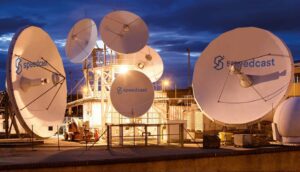
Demand for satellite communications has outstripped supply in markets recovering from the pandemic, according to satcoms provider Speedcast CEO Joe Spytek.
The post Speedcast sees a dearth of satellite capacity ahead appeared first on SpaceNews.
Amazon hails progress in driving down Project Kuiper antenna costs
Tuesday, 05 April 2022 21:37
An Amazon executive said the cost to produce antennas for its proposed Project Kuiper megaconstellation is already “well under $500,” even as SpaceX retreats from the subsidized $499 price it charges customers for its operational Starlink terminals.
To counter threats, U.S. intelligence community leans on partners
Tuesday, 05 April 2022 18:11
Partnerships with industry, academia and government agencies around the world are supporting the U.S. intelligence community’s campaign to counter threats to democracy like Russia's invasion of Ukraine, said Stacey Dixon, U.S. principal deputy director of national intelligence.
Amazon launch contracts drive changes to launch vehicle production
Tuesday, 05 April 2022 17:46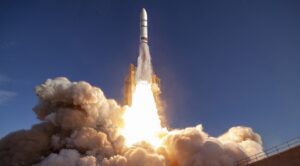
United Launch Alliance is planning major production improvements for its Vulcan rocket while Arianespace will increase the performance of its Ariane 6 to meet the demands of their new Amazon contracts for Project Kuiper.
In space, Russians and Americans remain 'dear friends': astronaut
Tuesday, 05 April 2022 16:29
After nearly a week back on Earth, NASA astronaut Mark Vande Hei said Tuesday the relationship between US astronauts and Russian cosmonauts remained positive while on board the International Space Station, despite their countries' animosity over Moscow's February invasion of neighboring Ukraine.
Vande Hei landed in Kazakhstan last Wednesday in a Russian capsule, along with cosmonauts Anton Shkaplerov and Pyotr Dubrov.
"About my relationship with my Russian crewmates, they were, are and will continue to be very dear friends of mine," the American Vande Hei said during a press conference in Texas Tuesday.
Space industry CEOs pledge to create more inclusive workforce
Tuesday, 05 April 2022 15:44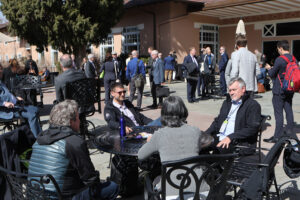
Top executives from the space industry on April 5 signed a pledge to advance diversity across the workforce.
The post Space industry CEOs pledge to create more inclusive workforce appeared first on SpaceNews.
Safeguarding Space: Q&A with Kristin Robertson of RIS
Tuesday, 05 April 2022 15:35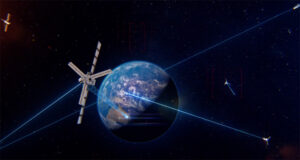
Kristin Robertson of Raytheon Intelligence & Space explains why space is critical to life on Earth—and how innovation by industry will help protect it.
The post Safeguarding Space: Q&A with Kristin Robertson of RIS appeared first on SpaceNews.
Raymond: 2023 budget proposal allows Space Force to ‘pivot’ to next-generation systems
Tuesday, 05 April 2022 15:06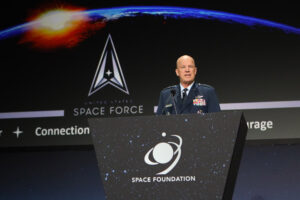
The U.S. Space Force cannot continue to acquire satellites and deploy constellations the same way it has in the past given the complexities to the current space environment, Gen. John “Jay” Raymond, said April 5.
NASA hits new snag with Artemis test at Kennedy Space Center, could threaten Axiom mission
Tuesday, 05 April 2022 15:00
NASA looked to complete its Artemis moon rocket tanking test at Kennedy Space Center after an issue forced a scrub on Sunday, but a new valve issue forced mission managers to call it off again.
NASA officials had already pulled the plug Sunday on the tanking test of the fully integrated Space Launch System rocket and Orion capsule at KSC's Launch Pad 39-B when it wasn't able to keep safely pressurized the mobile launcher on which the hardware sits.
That issue was mitigated overnight, but Monday's redo effort also fell short of its goal of filling and draining both the core and upper stages of the rocket with 730,000 gallons of super-cooled liquid hydrogen and liquid oxygen.
NASA teams were able to work around a series of issues Monday getting the liquid oxygen (LOX) loaded, but were ultimately stymied ahead of loading the liquid hyrdrogen by a vent valve, also located on the mobile launcher, that supplied pressure to the core stage of the rocket.
"Due the vent valve issue, the launch director has called off the test for the day," reads a post on NASA's Exploration Ground Systems Twitter.


